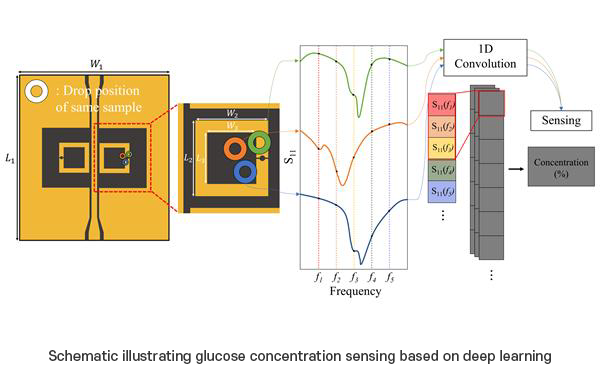New Deep Learning Method Enhances Glucose Measurement in Food
Recently, there has been significant excitement about cell phones that can translate your voice in real time during a call. This technology stems from deep learning, a branch of machine learning that relies on artificial neural networks. AI is already an integral part of our lives, and various fields of research are leveraging it to achieve remarkable advancements.
A collaborative research team, consisting of Professor Junsuk Rho from the Department of Mechanical Engineering, the Department of Chemical Engineering, and the Department of Electrical Engineering and PhD candidates Seokho Lee and Kyungtae Kim from the Department of Mechanical Engineering at Pohang University of Science and Technology (POSTECH), and Professor Hee-Jo Lee from Daegu University’s Department of Physics Education, has recently developed a new method for measuring glucose using deep learning technology. Their research was published in “Laser & Photonics Reviews,” an international journal focused on nanoscience, nanotechnology, materials, and sensing.
Metamaterials are artificial materials with unique electromagnetic properties not found in nature, enabling them to manipulate electromagnetic waves such as light or microwaves. A common structure used in the design of metamaterials is the split ring resonator (SRR) which features a ring with a split in its center. This design allows the SRR to absorb, penetrate, or reflect electromagnetic fields at specific frequencies and amplify signals due to the interruption of smooth current flow, leading to electromagnetic resonance within the ring. While SRRs have been widely used in sensors, their effectiveness has been limited by inconsistent and unreliable measurements influenced by factors such as temperature, humidity, and sample location.
In this study, the team aimed to address the issue of SRR-based sensor electrical signal fluctuations caused by changes in sample position. They began by optimizing the sensor to amplify electrical signals in the 0.5 to 18 GHz frequency range using a photolithography process that creates patterns on semiconductors with light. The researchers then employed deep learning technology to enable the glucose sensors to learn from the electrical signals measured at various locations.
Building on this foundation, the team developed a one-dimensional convolutional neural network (1D CNN) and conducted experiments with it. The results demonstrated that the model effectively compensated for errors due to sample location variations, achieving a mean absolute error (MAE) of 0.695% and a mean squared error (MSE) of 0.876%.
In an experiment aimed at predicting the brix in real fruit juices including pineapple, Jeju citrus, and Shine Muscat, the glucose measurement sensor utilizing the research team’s 1D CNN model demonstrated high accuracy, achieving an MAE of 0.45% and an MSE of 0.305%. By overcoming the inherent challenges of SRR, the researchers have developed a reliable glucose measurement sensor suitable for practical use.
Professor Junsuk Rho of POSTECH stated, “We have successfully managed to control the electrical signal which is sensitive to changes in sample position, thus enhancing the consistency and reliability of the glucose measurement device.” He continued, “It is also noteworthy that this technology can be commercialized and mass-produced using a photolithography process which is already widely employed in the semiconductor industry.”
The research was conducted with support from the National Research Foundation of Korea, the Ministry of Science and ICT, the Ministry of Trade, Industry and Energy, the Daegu University IACF, POSCO’s Industry-Academic Integrated Research Center, and Samsung Electronics (Samsung Strategic Industry-Academic Program).

